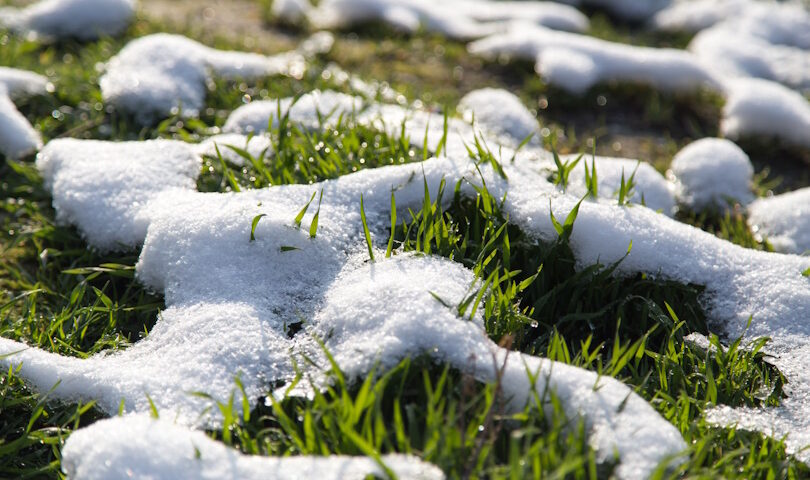When the colder months arrive in Connecticut, most homeowners pack away the lawn tools and shift their focus indoors. But smart lawn care doesn’t stop when temperatures drop. In fact, dormant grass seeding—also known simply as dormant seeding—can be one of the most effective ways to grow a thicker, healthier lawn once spring rolls around.
Below, we break down what dormant seeding is, how it works, the benefits, and when it outperforms traditional spring seeding. If you’re looking for the best equipment to get the job done, River East Power Equipment has the tools, support, and expertise to help.
What Is Dormant Grass Seeding?
Dormant seeding is the process of spreading grass seed on your lawn after soil temperatures have dropped below the germination point—usually late fall or early winter. The seed remains inactive (“dormant”) until the ground warms naturally in early spring.
This technique allows the seed to settle into the soil over winter and germinate as soon as conditions become ideal.
How It Works
- Soil temperatures fall below ~50°F
- Grass seed lies dormant through winter
- Freeze-thaw cycles help work the seed into the soil
- Seed germinates earlier than spring-applied seed once temperatures rise
Because of the early head start, dormant seed often produces stronger, more resilient grass compared to waiting until spring.
Dormant Seeding vs. Spring Seeding: Which Is Better?
Many homeowners wonder about dormant seeding vs. spring seeding—and which produces better results.
Dormant Seeding Advantages
- Earlier germination: Seed sprouts as soon as soil warms, beating spring weeds.
- Better seed-to-soil contact: Winter’s freeze-thaw cycle naturally pulls seed deeper.
- Less competition: Weeds aren’t active in winter, giving your new grass a better start.
- Moisture advantage: Snow and winter moisture help keep seed in place and hydrated.
Spring Seeding Disadvantages
- Seed germinates later, giving fast-growing spring weeds an early lead.
- Soil may be too wet or muddy to seed properly.
- Higher temperatures can stress young seedlings.
If your lawn needs a boost, dormant seeding often delivers better long-term results than waiting until spring.
Best Dormant Seeding Techniques
For success, timing and technique matter. Here are the most reliable dormant seeding techniques recommended by experts:
1. Time It Right
Aim to seed after soil temperatures consistently drop below 50°F, but before the ground freezes solid. In Connecticut, that’s typically late November through early January.
2. Prepare the Lawn
Even though growth has slowed, prep still matters:
- Mow the lawn short (but not too short)
- Remove leaves and debris
- Loosen thin or bare spots with a rake or dethatcher
3. Choose the Right Dormant Grass Seed
Cool-season grasses such as:
- Kentucky Bluegrass
- Tall Fescue
- Perennial Ryegrass
4. Seed at the Proper Rate
Follow recommended overseeding or bare-spot seeding densities to avoid crowding and ensure strong germination.
5. Use a Quality Spreader
A high-quality broadcast or drop spreader will ensure even distribution—something we can help you with at River East Power Equipment.
6. Let Winter Do the Work
After spreading, let the freeze-thaw cycle and winter moisture pull the seed into the soil naturally. No need to water during winter.
Does Dormant Grass Seeding Actually Work?
Yes—dormant grass seeding works extremely well when done at the right time and with proper technique. Many lawn professionals (including those throughout Connecticut) prefer it over spring seeding because:
- It produces stronger early-season growth
- The seedlings establish before weeds
- It requires less maintenance in the early stages
- It helps repair winter-damaged or thin lawns quickly
Homeowners often see a noticeably thicker, healthier lawn by early spring.
Common Mistakes to Avoid
- Seeding too early (seed may germinate prematurely and die)
- Seeding too late (frozen ground prevents proper soil contact)
- Using low-quality or wrong-type grass seed
- Applying seed right before heavy rain, which can wash it away
Get the Right Tools for Dormant Seeding at River East Power Equipment
Whether you need a spreader, dethatcher, mower tune-up, or winter prep tools, River East Power Equipment has everything you need to make dormant seeding a success.
Our team can recommend the best equipment for your lawn size, conditions, and goals—so your grass looks its best come spring.
Visit River East Power Equipment in East Hartford or browse online at PowerEquipmentCT.com to get the equipment and expertise you need for a healthier lawn year-round.
